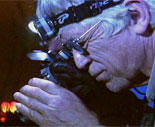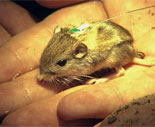 |
 |
 |
| > Camp Pendleton | ||||||||
|
||||||||
 |
||||||||
 |
||||||||
Camp Pendleton
With the generous assistance of William Berry, Head of Resource Management Division, as well as that of Commanding Officer Colonel Seaton and their respective staffs, sequences for "Hotspots" were filmed throughout the 125,000 acre Marine Corps Base Camp Pendleton with its vast wealth of Threatened and Endangered species. These include the California Least Tern filmed with the collaboration of ornithologist Brian Foster and his team; the Least Bell's Vireo and Southwestern Willow Flycatcher, whose principal researcher, USGS ornithologist Dr. Barbara Kus provided two days of her generous time. In addition, one of the most Critically Endangered mammals in North America, the Pacific Pocket Mouse (Perognathus longimembris pacificus), was documented. This was the first time the five-gram nocturnal Pocket Mouse had ever been filmed. It's principal researcher, Dr. Debra M. Shier Grether, a Wildlife Biologist for CRES, Conservation and Research for Endangered Species, worked closely with the DSF team to make our effort successful. During the filming, she applied for the first time the tiniest transmitter ever created for any animal, a device developed with her colleagues in Switzerland.
Notwithstanding its national security requirement for training marines, Camp Pendleton's personnel are also mandated by Congress to protect the large number of Threatened and Endangered species that exist on the base (17 resident T & Es). The result is that this spectacular region of Southern California hosts the last and the largest remaining coastal habitat that has not been gobbled up by development. The Marine Corps takes special pride in its conservation work and the fine results are clearly evident.

